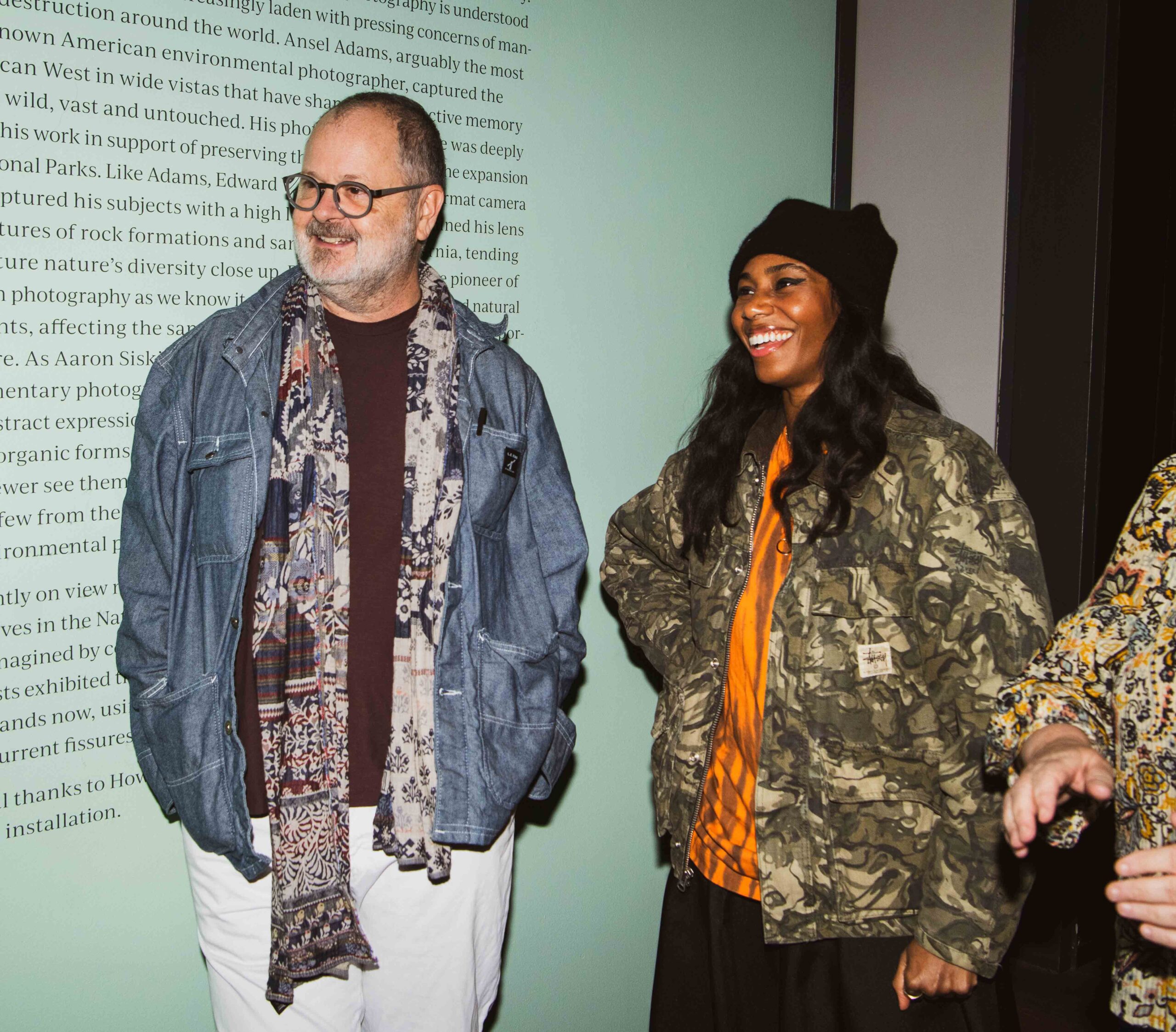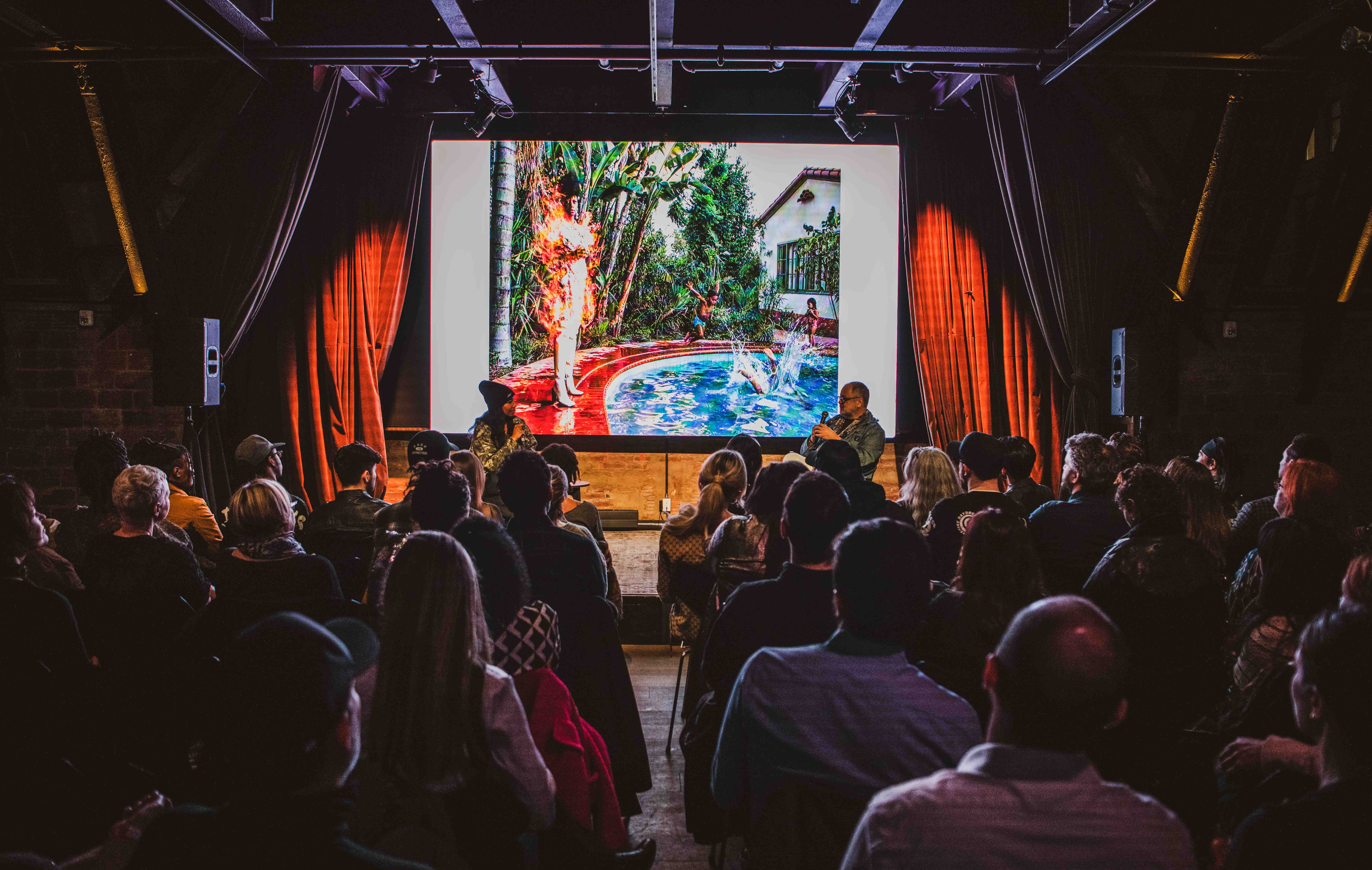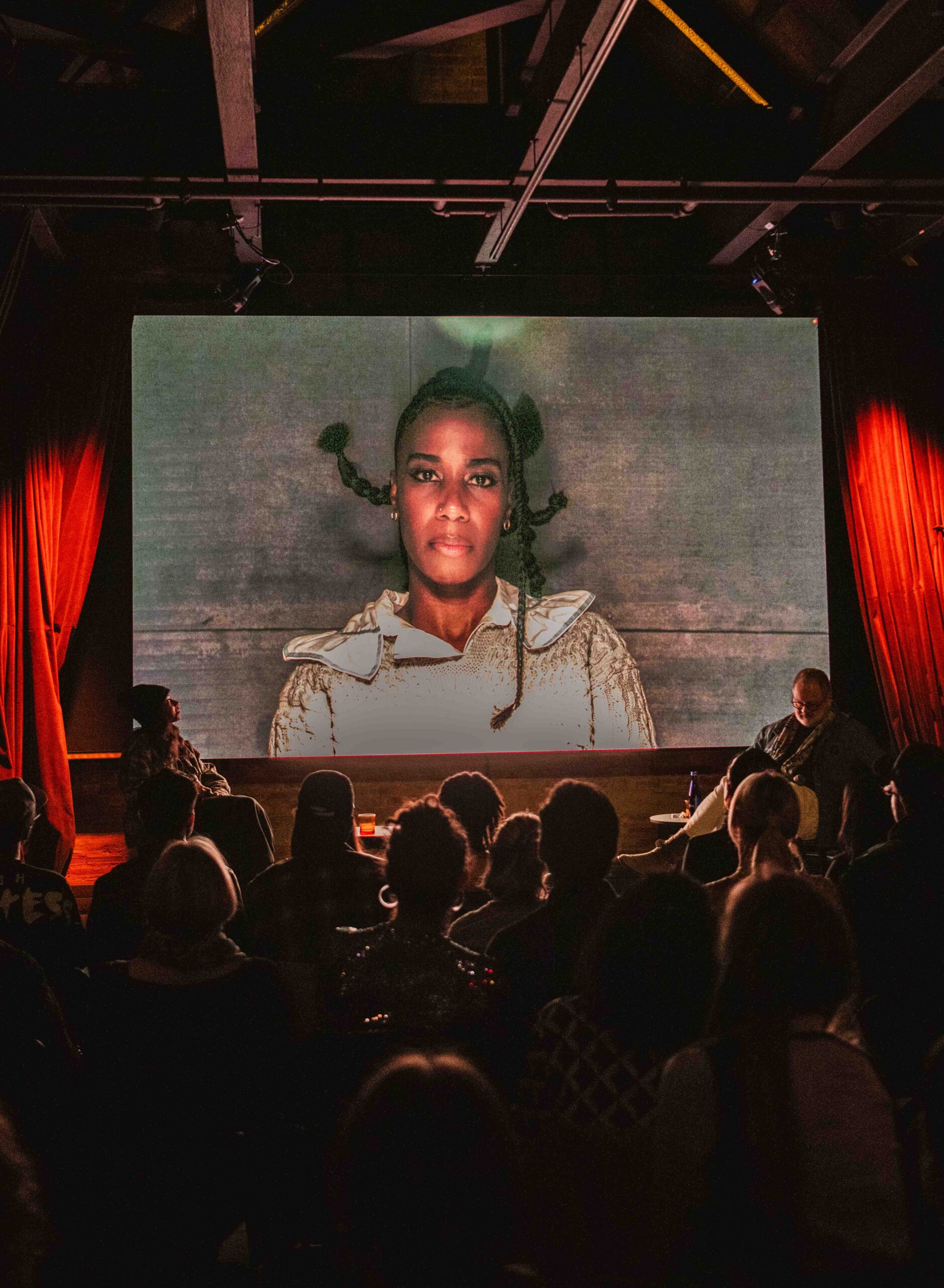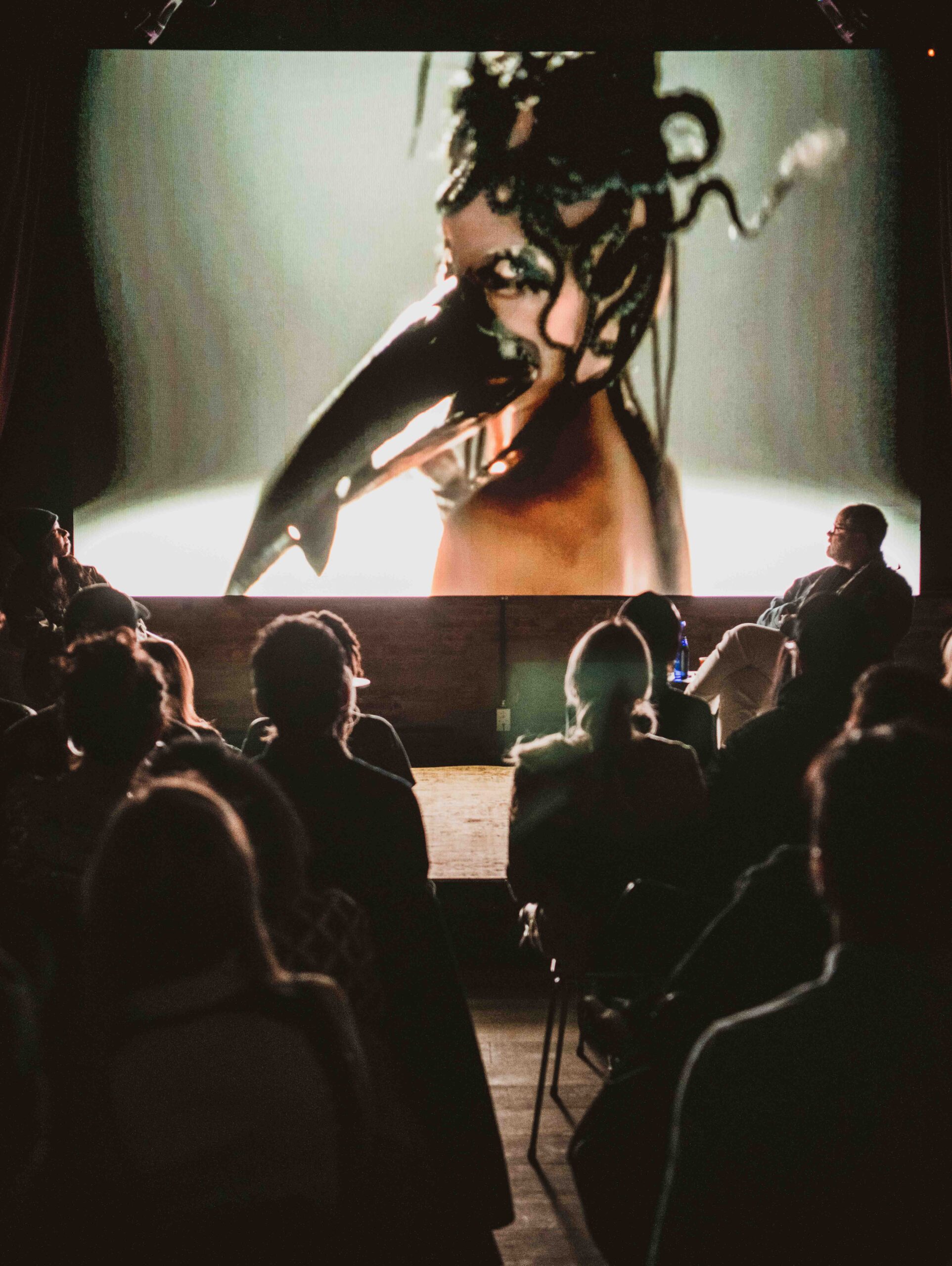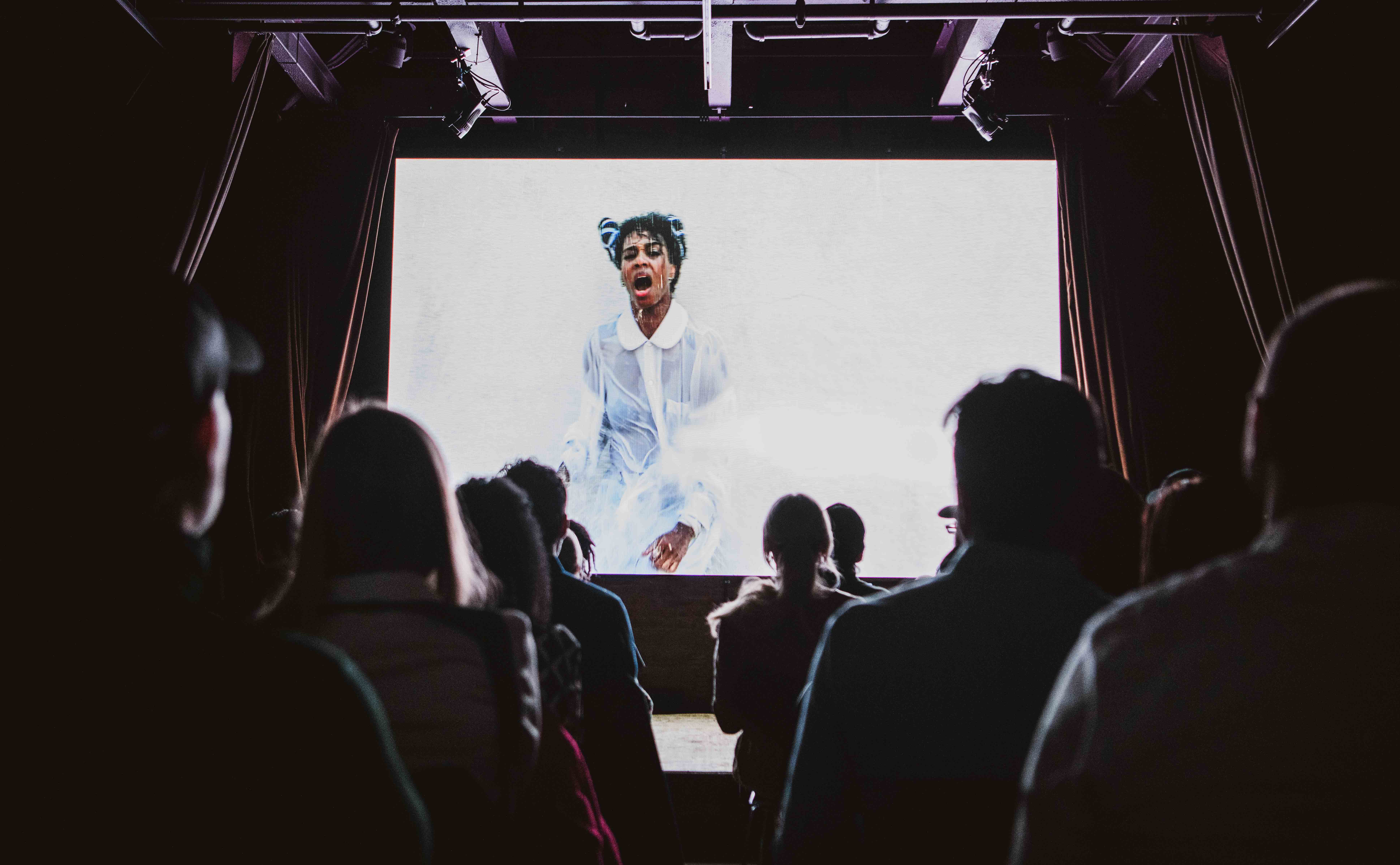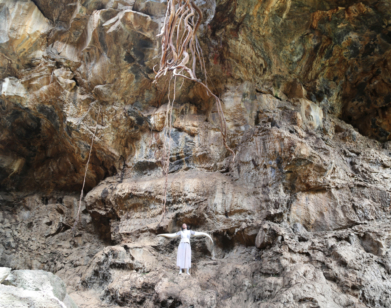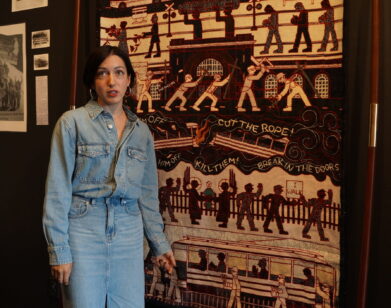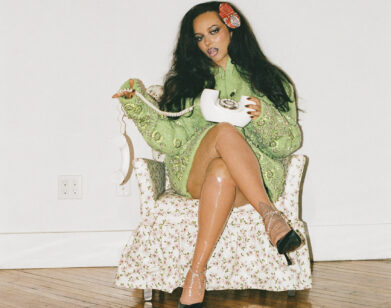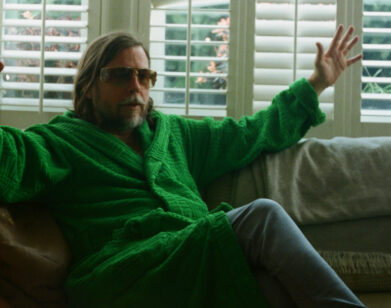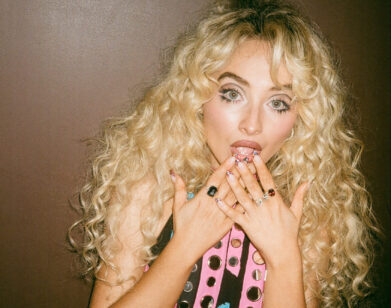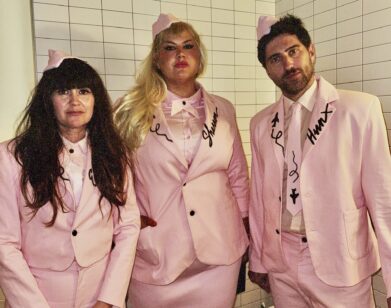panel
Santigold and Frank Ockenfels 3 Take Us Behind the Scenes of Their Spirituals Videos
Photographer and artist Frank Ockenfels 3 was never really passionate about the motion picture. After over three decades of shooting celebrities like David Bowie and Kurt Cobain and combining his photographs with collage and painting, he understood his forté. But when the celebrated new wave pop star Santigold asked him to shoot a series of vignettes for her 2022 comeback album Spirituals, he thought, “If I’m going to do it again, this would be the person.” Seeking an artist truly capable of capturing the transcendental spirit of the music, she reached out to Ockenfels at the suggestion of a former collaborator. The rest, as they say, is history. As Ockenfels closed out his retrospective, titled Introspection, at Fotografiska New York earlier this month, curator Jordan McLean invited Santigold to the museum for a viewing party to get into the story of their collaboration. “You’re capturing something that I don’t even feel is there,” Santigold said of the music videos as the pair discussed Santi’s punk roots, catching the holy spirit, and sprinting through the suburbs in Balenciaga thigh-highs. What follows is an abridged version of that conversation.
———
FRANK OCKENFELS 3: When Santi reached out, it was like a no-brainer to me because I was always a big fan of her stuff. Then it became a family thing, because my son was one of my assistants and we shot it at your house. We built a studio in her living room.
SANTIGOLD: We did the photos before the video shoot. We had my whole family involved, even my nephew. I had been in the house with my children for a long time during the lockdown and I told Frank, “This is what I want to do.” He was like, “That’s not what I usually do, but, yeah.” And he killed it.
OCKENFELS: We told the kids, “Jump in the pool,” and they were ecstatic. Since it was Spirituals, you had this whole outfit with the glasses and the veil. We did a bunch of double exposures.
SANTIGOLD: But I’m not good in front of cameras. I like music because I like to dance. So we had music on and I was just flapping my wings and moving.
OCKENFELS: Then we had the other idea of—
SANTIGOLD: The monster me. The mommy who has no escapes and needs to dress up in the house. It was really fun being the monster. I will say that. I was so excited to make funny faces. Trying to look nice in photos is exhausting. When you get to just play and be wild and be real, that’s when it’s fun. And when you trust the person who’s taking the pictures, because I often don’t. You know that whatever happens is going to be amazing, so you just give the energy and he catches it. This was the first day we really met.
OCKENFELS: Yeah, we hadn’t really sat and talked. I kind of showed up in your front yard and the stylist was out there with all the clothes because there was no place for them in the house. We finished each other’s sentences a couple of times in the first couple hours and that’s when I knew I was okay.
SANTIGOLD: Exactly.
OCKENFELS: This whole series was one of my favorites. We started out without the things on your finger and you were like, “I think I need claws.” Suddenly, the claws came out. It was amazing. The monster came out.
SANTIGOLD: Sometimes when he shoots me, I’m like, “Who is that?” [Laughs]
OCKENFELS: There’s a lot of those. I think the ones that are farthest out are the ones with the glasses and the veil. It almost looks like Aretha Franklin.
SANTIGOLD: I liked it when we did the veil in front of the refrigerator with the children. One of my kids was digging up his nose and the other one had on a Little Mermaid outfit.
OCKENFELS: We had to keep it real.
OCKENFELS: It ended up being at about 11:00 at night. I set this up out in the yard and you just started jumping around and doing whatever. You went for it.
SANTIGOLD: I sure did. I have this as a GIF and I’m jumping and it’s literally the ascension that I was talking about. Then I started doing weird stuff, rolling my eyes back in my head like I was possessed. Part of what I had in my mind was that when I was little, my great-grandmother and my great aunt were part of this church in Baltimore. The church that my mom went to in Philly was really boring. But this church was where they would catch the spirit and the ushers would come and they’d be fanning people and they’d fall out and there was music and people screaming. I thought it was the most exciting thing. When I thought of this record, I thought of this idea of catching the spirit, when you start speaking in tongues and people are fanning you and you can’t stand up. So I was trying to turn that into a visual.
OCKENFELS: We did so much. There were all these crazy plants that were really prickly. They had big needles on them. I kept on getting stabbed and I was wearing white pants and kept on seeing these blood—
SANTIGOLD: Are you serious?
OCKENFELS: They were all over my pants.
SANTIGOLD: You didn’t say anything.
OCKENFELS: I was trying to get the picture. I put you in the protective box. That’s why.
SANTIGOLD: After that I was like, “Do you do videos?” They were little vignettes.
OCKENFELS: It’s a great way to not make a video for every single song, but make a little taste.
———
“HIGH PRIESTESS”
OCKENFELS: The first one, “High Priestess”—they were very low budget, very small crews. Between a pet store and a Home Depot, we found all these little pieces of light. You said to me, “Have you ever seen Spies Like Us?” I said, “Yeah.” She goes, “You know when they come out and they’re wearing those big silver suits and they’re all puffy and there’s lights everywhere? I want to do that, but I want to be dancing in downtown L.A.” Everything had to be LED. I found this ring light that fit her like a crown perfectly, illuminating her face. Then you had a little battery pack on you.
SANTIGOLD: My stylist, April Roomet, who’s worked with me for years, is also my best friend since I was 14, so she knows how to deal with me when I’m like, “I want to do this tomorrow.” There was a battery pack inside of the coat.
OCKENFELS: Yeah, that was the power for your halo.
SANTIGOLD: I don’t know how to put this in a way that’s acceptable, but sometimes people seem like they’re not together, but when you pay attention, they’re kind of beyond where we are. I don’t think it’s far off between being hyper-aware and being crazy in our culture, you know? So this song is called “High Priestess,” and it’s about being so on your own level that it looks like, “What is she doing?”
———
“SHAKE”
OCKENFELS: “Shake” is funny. I mean, that’s the craziest thing anyone’s ever said to me they wanted to do to themselves, and then I had to film it.
SANTIGOLD: When I wrote this song, there was just so much going on. It was mostly written during 2020 and it was cathartic to just get it out because I was in survival mode. I have three children, and at some point, I was able to sneak off and make music as a way to stay sane. There was so much happening with the protests and the riots and there was something about those images where the hose is hitting protesters during the civil rights movements and how they’re just taking it. Life is like that anyway, especially now. It’s literally one foot steps and the other just keeps standing. The hose image just stayed with me. I was like, “Frank, you got to hit me with a hose.” He was like, “What are you talking about? “I was like, “I want to keep singing through the hose.” So it ended up being almost like a performance piece.
OCKENFELS: Yeah, we had to hire a water truck. We had to find a place to do it that we could flood, because the minute the hose starts going off, the water goes everywhere. And of course, in Los Angeles, wasting water is a big thing to people. You get a lot of people looking at you sideways.
SANTIGOLD: They kept trying to do it really light and wavy.
OCKENFELS: A little stream, and I’d go, “No, it’s got to knock her down.” We kept on arguing with the guy.
SANTIGOLD: “Turn it up.”
OCKENFELS: We got to about 90 percent, because he wouldn’t go 100 percent. He refused to because he said, “I’ll bruise her.” The hose was only about 10 feet away from you.
SANTIGOLD: Yeah, it did hurt.
OCKENFELS: I put knee pads on her because the alleyway had gravel on it if the hose did knock her down. There were a lot of things we had to be concerned about, but we could only do it once because there was no time for her to go inside, put makeup back on, and put the clothes back on. It was a one out. That was it.
———
“NOTHING”
OCKENFELS: Then you did your bird, “Nothing.” I don’t even know the story of how you met this woman or what we were doing, but we did it.
SANTIGOLD: I was in the worst shape ever and I was like, “I’m going to be naked.” Basically, my friend Wangechi Mutu is an amazing, brilliant artist I met years ago. She had a piece that she had done years before I even met her, and it looked like this mythical female creature. They’re kind of human, but more. It was this bird woman eating a snake and with multiple breasts—more than two. I had this song called “Nothing,” which was about everybody trying to put you in a box and tell you who you are when that’s for us to determine about ourselves. The song is like, “You keep saying that I’m nothing,” something like that. I wanted to have a version of myself that was unnameable, beyond anybody’s imagination, and this beautiful, magnificent creature was so powerful and so female, but that you couldn’t even name it. I said, “Frank, I want to be this bird creature.”
OCKENFELS: Then she went into makeup for like three hours. This was after I had just hit her with a fire hose, so we were all kind of recovering from that. She’s like, “I got to be naked.” So I kind of put her in a ball on the ground, and then we covered up all the things that we needed to cover up.
SANTIGOLD: I had picked out all these poses. That’s how I do everything. I leave nothing to chance. I wanted it to look like you don’t know what the creature is until the end, so it was just closeups in the beginning for a long time.
OCKENFELS: We had to keep it really short, because there wasn’t much else place to go. You couldn’t do a master shot of sitting in the middle of the space because it would’ve given too much away.
SANTIGOLD: That’s the idea with doing vignettes anyway. The attention span nowadays is about that long. Each video is like you’re stepping from dimension to dimension to dimension. Just real quick. As soon as you’re in, you’ve gone somewhere else. I think it really worked.
OCKENFELS: Santi took all the footage and she found editors to cut these, which was amazing and each person understood what they were supposed to do with it. Sometimes I shoot stuff and I just go, “I have no idea how this all goes together.” I don’t storyboard things. So it worked out really well.
———
“FALL FIRST”
OCKENFELS: When your rock song [“Fall First”] came up, I started laughing and went, “What do you want to do with this?” Then you sent me old Beastie Boys videos on a rooftop. Of course, we didn’t have the option of going to a lot of places. There was a crazy parking lot in the back of one of the studios on the day we did “High Priestess,” and it was the only thing we could kind of go to in Downtown L.A. where she could play with this band and just run around and have fun and just make it—
SANTIGOLD: Yeah, I just wanted to do something raw and fun.
OCKENFELS: Yeah. Probably the biggest reason I wanted to work with her is because she approaches music like I approach photography and art, and there is no one way of doing anything. She does so many different things.
SANTIGOLD: It’s funny, I actually started music writing first for someone else, and I didn’t really like it because it didn’t come out like it was in my head. I had no intention of ever singing in front of anyone ever. I had a solo when I was 15 at school, and it was just traumatizing. But I just wanted to hear music the way that I came up with it. So the first band that I was in was a punk band. Well, it was like a post-punk new wave band. There’s something about performing that kind of music that is just the best. It’s so free and it’s so raw, and I get to be the most real, full version of my energy. When I was watching this, I literally got all excited because of the movement. It’s not like Santigold on stage, I’ll tell you. I suck at playing the bass, but other than that, it’s really great. I wanted to show that side of myself as an artist because I hadn’t really gotten to do that as Santigold.
OCKENFELS: It was a lot of fun to shoot with you. We’re in this massive parking lot, and there was another music video being shot on the other end of the parking lot. Typical Downtown L.A. moment.
SANTIGOLD: I didn’t even know that.
OCKENFELS: We brought these huge playback speakers out and… Now understand, down the street is the Mongols, which is a biker gang, the Hell’s Angels. The other clubhouse was down the street. Then across the way, there was, I don’t know, there’s all these things in this neighborhood. It’s kind of a transitional neighborhood near Boyle Heights on the other side, but it’s become a big place to do music videos and such. We didn’t ask permission to go out in the back parking lot and do this. We were on private property and we just did it.
SANTIGOLD: I didn’t know.
OCKENFELS: No, I didn’t tell you any of this. No. I kept on looking around and going, “When the cops show up—”
SANTIGOLD: We were punk rock. We could have taken off.
OCKENFELS: It’s so punk rock.
SANTIGOLD: Then Frank’s doing all this shaking the camera, and I’m like, “I want to run.” He’s like, “Let’s go.”
OCKENFELS: We gave her a GoPro and I said, “Just go. Just run around and look at yourself with this.”
SANTIGOLD: It’s so fun to work with people who think on the spot in that way.
———
“WITNESS”
OCKENFELS: The hair one, “Witness,” was the first thing we did.
SANTIGOLD: It was messy.
OCKENFELS: This is one of my favorites because of how simple it is. It’s so beautiful.
SANTIGOLD: I had seen images of a ritual where people are covered in a powder and dust. I just loved how it looked so much. Then I had also seen another image where five women were braiding one person’s hair at the same time.
OCKENFELS: So I was like, okay, I’m just going to take a beautiful woman and dump a bunch of white powder all over her face. It was unnerving to me. I kept on saying, “She still has to look pretty.” It was tough. I was showing you going, “You don’t want to be this.” And you’re like, “No, you’re right. I don’t.” Both of us struggled with that, trying to make it right.
SANTIGOLD: Ultimately when I look at it, I’m not like, “I look so pretty.” but I’m like, “This looks beautiful though.” I think as a Black woman in this culture, the beauty ideals are so far from what I am. All of us deal with it, especially as an aging woman. I mean, it’s ridiculous. So the struggle as an artist is to be able to look at art of yourself and not be like, “Oh my god, my laugh lines, and this isn’t a good angle.” To be able to back up and be like, “This is a beautiful piece of art.” It’s easy with you because when you look at the photography of the shots, it’s beautiful. The contrast between the powder and the dark skin is so nice. It’s a work in progress to be able to approach everything as art, even when you’re in it, and as a woman, to constantly work on seeing beauty differently.
———
“MY HORROR”
OCKENFELS: “My Horror” was kind of an afterthought. The simple idea was, “I just want to run through a neighborhood in slow motion.” I was like, “Okay.” Then she walks out and I see what she’s wearing, and I’m laughing.
SANTIGOLD: The boots were thigh high white—were they Balenciaga? They were crazy.
OCKENFELS: I don’t know, but huge heels.
SANTIGOLD: I mean, you couldn’t even bend your knee.
OCKENFELS: And she’s running in them. I’m sitting on the back of a pickup truck and we’re just driving to this neighborhood and people are like—
SANTIGOLD: People are taking out trash cans. Just remember the monster me.
OCKENFELS: Yeah, the monster’s chasing her. Every time she turned to look back, I went, “She’s going down.” She’s in four inch heels running at a full sprint down this road.
SANTIGOLD: I was really running.
OCKENFELS: But then she’d come back and I’d be like, “Okay, she’s up. She’s still going straight.”
SANTIGOLD: The hair was falling when I was running too. Frank never really knew the outfits until I came out, so every time he’d be like, “What?”
OCKENFELS: “That’s not what I expected, but we can make it work.”
SANTIGOLD: But it’s cool to slow something down that much. It’s kind of a reminder of how fast we live life. When you start focusing on the details, like the rhythm of the arms or the positions of the hands, that’s interesting to me. It’s almost like in our culture, there’s a pain of having to slow down, especially for somebody like me because I’m like, “Let’s go, let’s go, let’s go.”
———
“AIN’T READY”
OCKENFELS: For the last one, “Ain’t Ready,” I loved the song and I said, “Can we make it an interrogation?” You were like, “Okay.”
SANTIGOLD: I was so tired because we had just shot “Shake.” I’m in this room and I was trying so hard to be a good performer and I felt like I sucked.
OCKENFELS: That’s all you kept on saying to me. And everyone’s just looking at her going, “Every single take has been amazing.” We’re literally in a box that was eight by eight with the table and we had security cameras everywhere. I did a whole series of shots where I’m right across the table from her, and then I let you loose in the room.
SANTIGOLD: I had an idea that I wanted to be so wild and so crazy in the room, I was throwing chairs and I was doing everything. I don’t know. I have this superhuman version of what I want to do and what I want to be. Then you have the limitation of being a human being. But sometimes, when you have somebody who sees things as they are, but through a certain lens, that’s when it’s magic. You’re capturing something that I don’t even feel is there.
OCKENFELS: Then you crushed it, but you wouldn’t believe me. I mean, tremendous performance.
SANTIGOLD: I remember I wanted to cry, and I almost did, and then it was the end. It was good.
OCKENFELS: That was fun. That’s our collaboration.

